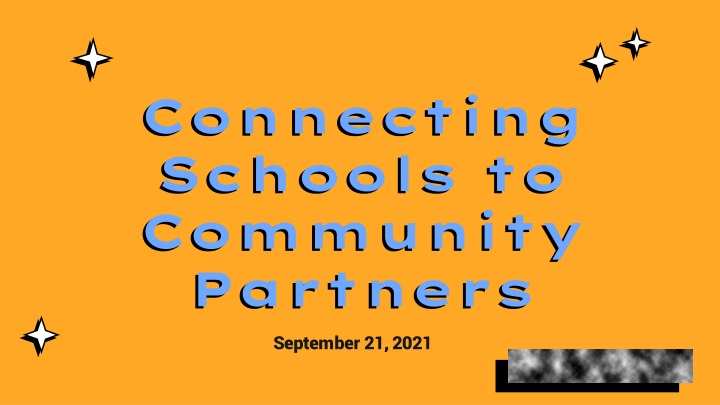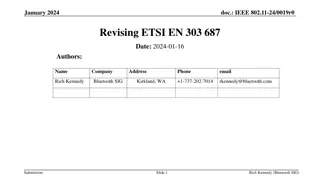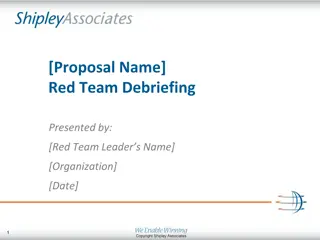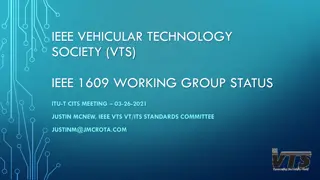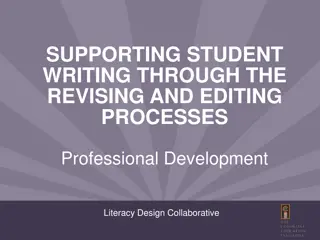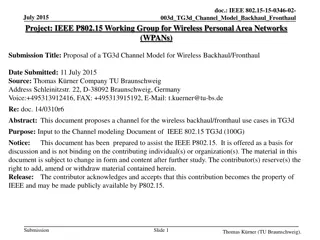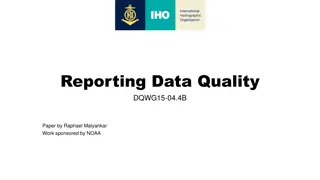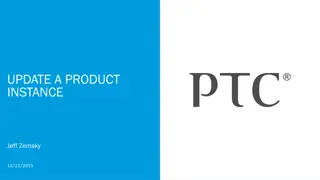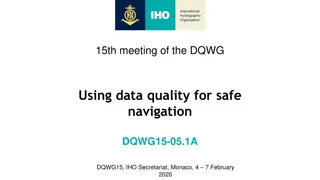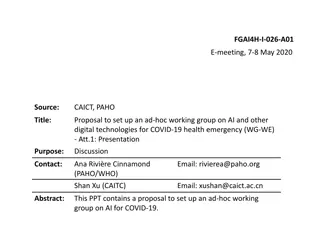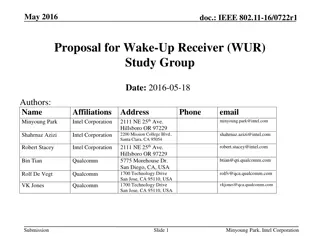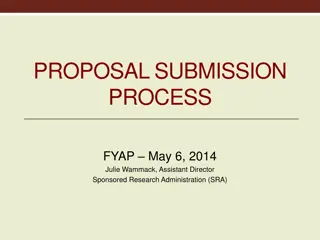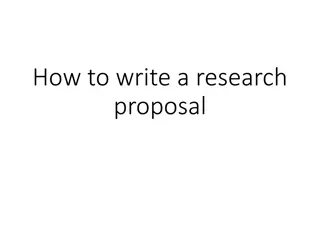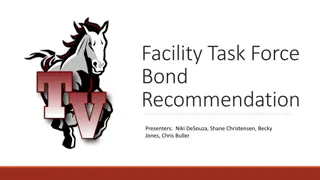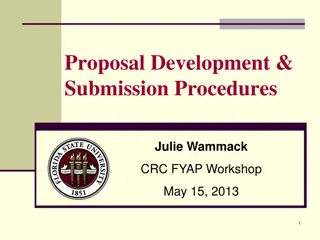Proposal for Revising S-97 Part C Data Quality Working Group
The 18th Meeting of the Data Quality Working Group in Monaco proposes revisions to S-97 Part C in alignment with ISO 19157 standards. The focus is on updating positional accuracy definitions and measures to enhance data quality and consistency within spatial reference systems.
Download Presentation

Please find below an Image/Link to download the presentation.
The content on the website is provided AS IS for your information and personal use only. It may not be sold, licensed, or shared on other websites without obtaining consent from the author.If you encounter any issues during the download, it is possible that the publisher has removed the file from their server.
You are allowed to download the files provided on this website for personal or commercial use, subject to the condition that they are used lawfully. All files are the property of their respective owners.
The content on the website is provided AS IS for your information and personal use only. It may not be sold, licensed, or shared on other websites without obtaining consent from the author.
E N D
Presentation Transcript
Connecting Schools to Community Partners September 21, 2021
02 01 FUNDING ESSER III funding and requirements INTRODUCTION ACT Now and presenters AGENDA 03 04 BENEFITS Benefits of developing partnerships with community entities HOW-TO Steps to create lasting partnerships
MENTI What are you most hoping to get out of this training?
OBJECTIVES FUNDING NEEDS IDENTIFY Clear understanding of distribution & availability Ability to conduct an assessment Ability to find relevant community programs ACT Now Know our role in this process and how we can help OUTREACH Confidently establish communication with community organizations
01 INTRODUCTION
ACT Now is a diverse statewide coalition supported by Illinois families, educators, business leaders, afterschool providers, community advocates, youth organizations, and policymakers from across the state. We believe that an increased commitment to young people beyond the traditional school day is a crucial part of their growth into productive, healthy adults.
OUR TEAM SUSAN STANTON NIKKI GILLANI Afterschool Resources & Support Specialist for School Partnerships Network Lead
Quality after school programs provide safe, engaging and fun learning experiences to help children and youth develop their social, emotional, physical, cultural, and academic skills. Debbie Stabenow
02 FUNDING
COVID Relief Education Funding ISBE State Set Aside Granted funding to EBF districts for learning loss, summer enrichment, and afterschool School Districts Must spend 20% of funds on learning loss. Afterschool is an allowable use. ISBE Focusing on 4 projects: 1) high impact tutoring, 2) community schools, 3) bridge programs, and 4) assessment
Other Funding Sources 21stCCLC Teen REACH Afterschool Programs CCAP
03 BENEFITS
DEVELOPMENT These programs are already established and high quality removes the need to create a brand new service COMMUNITY Collaborations can create a stronger community commitment to student academic and social success
24.6 MILLION In America, for every 1 child in an afterschool program, 3 are waiting to enroll
ADDITIONAL BENEFITS OF AFTERSCHOOL OST programs offer the following advantages to students and families: Lessens the achievement gap Safety Student mental health Community engagement
EXAMPLES 70% 60% 89% OF OF OF STUDENTS STUDENTS PARENTS of children enrolled agree that A.S. programs help them keep their jobs Improved their behavior with consistent program participation Improved homework completion and class participation
04 HOW-TO
STEPS TO BUILD PARTNERSHIPS LIST Compile a list of programs that fit your needs NEEDS Create a needs assessment OUTREACH Establish communication with programs AGREEMENT Create terms of the partnership INTEREST Gauge interest of students/community
1. NEEDS ASSESSMENTS Evaluates the current status of your target community or group. This will review what areas of need are prominent in the target community. What should be included? Community demographic data (CMAP) School data (Teacher surveys;school website) Student academic attainment (ISBE Report card; teacher/student surveys) Existing gaps
GAP ANALYSIS ! !
MENTI What is/are the most pressing needs for your youth?
2. LIST ORGANIZATIONS Base this list off of the gap analysis/needs assessment already created. Things to remember/consider: Reflect the culture and values of your students Family engagement opportunities Location Prioritization
TYPES OF PARTNERS COLLABORATORS Collaborative partners would agree to come in 2- 3X per week to run a program (i.e. dance class) FULL A full-time partner will run your entire OST program (i.e. 21stCCLC).
ACT Now Map & Database
3. INTEREST The programs you offer should be of interest to your youth and their families in order to achieve full participation. How to ensure this: Surveys Shared mission
SURVEY PARTICIPATION CLASS TIME Morning announcements, exit ticket INCENTIVE Raffle, 5 more minutes of recess/free time REMINDERS PAPER Have paper surveys ready to give parents during pick up/drop off Remind App, emails, homework
4. OUTREACH After receiving interest information, filter your original program list to include those that fit both needs and interest. Begin your outreach! Be sure you fully understand your students needs Know how you want to convey your school s needs to the organization Introduce yourself, your school, your students needs, how that specific organization can help meet those needs
5. PARTNERSHIP AGREEMENT This agreement should establish responsibilities for each entity to uphold for the duration of the partnership. Set clear expectations, goals, responsibilities, oversight, and outcome measures Exhaust this document Incentive
STARTING AN AFTERSCHOOL PROGRAM TOOLKIT This toolkit outlines step-by-step protocol to develop an original afterschool program. Breakdown: Before you start Developing the program Resource guide
How ACT Now Can Help Suggest Partners to Fit Needs Discuss the Needs of Your District Make Ongoing Networking and Training Connections to Partners
Examples of Partnerships Possible organizations to run afterschool programming: YMCA s, Boys and Girls Clubs, Park Districts, other local CBOs Specific services: mentoring, mental health, nutrition Curriculum and activities Trainings for providers
Using Data to Design Afterschool Programs 9/30 10 AM
MENTI Check-in
RESOURCES Afterschool Alliance Factsheet Gap Analysis Template CMAP Community Data Snapshots ISBE Report Card ACT Now Map & Database ACT Now Starting an Afterschool Program Toolkit Outreach Template
THANKS Do you have any questions? stantons@actnowillinois.org 312-877-0725 actnowillinois.org CREDITS: This presentation template was created by Slidesgo, including icons by Flaticon, and infographics & images by Freepik Slidesgo Flaticon Freepik
